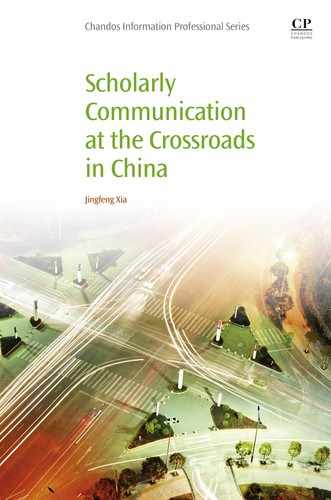Book Description
Scholarly Communication at the Crossroads in China follows the dichotomy paradox to focus on both achievements and challenges at every step of the scholarly communication process, highlighting Insights and trends in academic infrastructure and scholarly behaviors within the context of local economic, political, and technological development.
Since China adopted an open-door policy in the late 1970s, it has experienced a dramatic economic transformation. With a growth rate around 10% over the past three decades, China is now the second largest economy by nominal gross domestic product and by purchasing power parity in the world. Economic success has impelled restructurings in almost all aspects of the social and cultural settings. Among other changes, the new pursuits of education, research, and scholarship have redefined the academic community with its development across generations and ideologies.
- Provides a large picture of scholarly communication in China, with official data, interviews, and personal observations
- Includes the latest multidisciplinary information, covering education, library science, and information science
- Contains diverse formats, including charts and tables, with dichotomy examples
- Presents historical and contemporary coverage, analyzing data from 1978 onwards in a cultural, economic, social, and political context
- Focuses on changes by taking readers through the complex process of scholarship transformation
